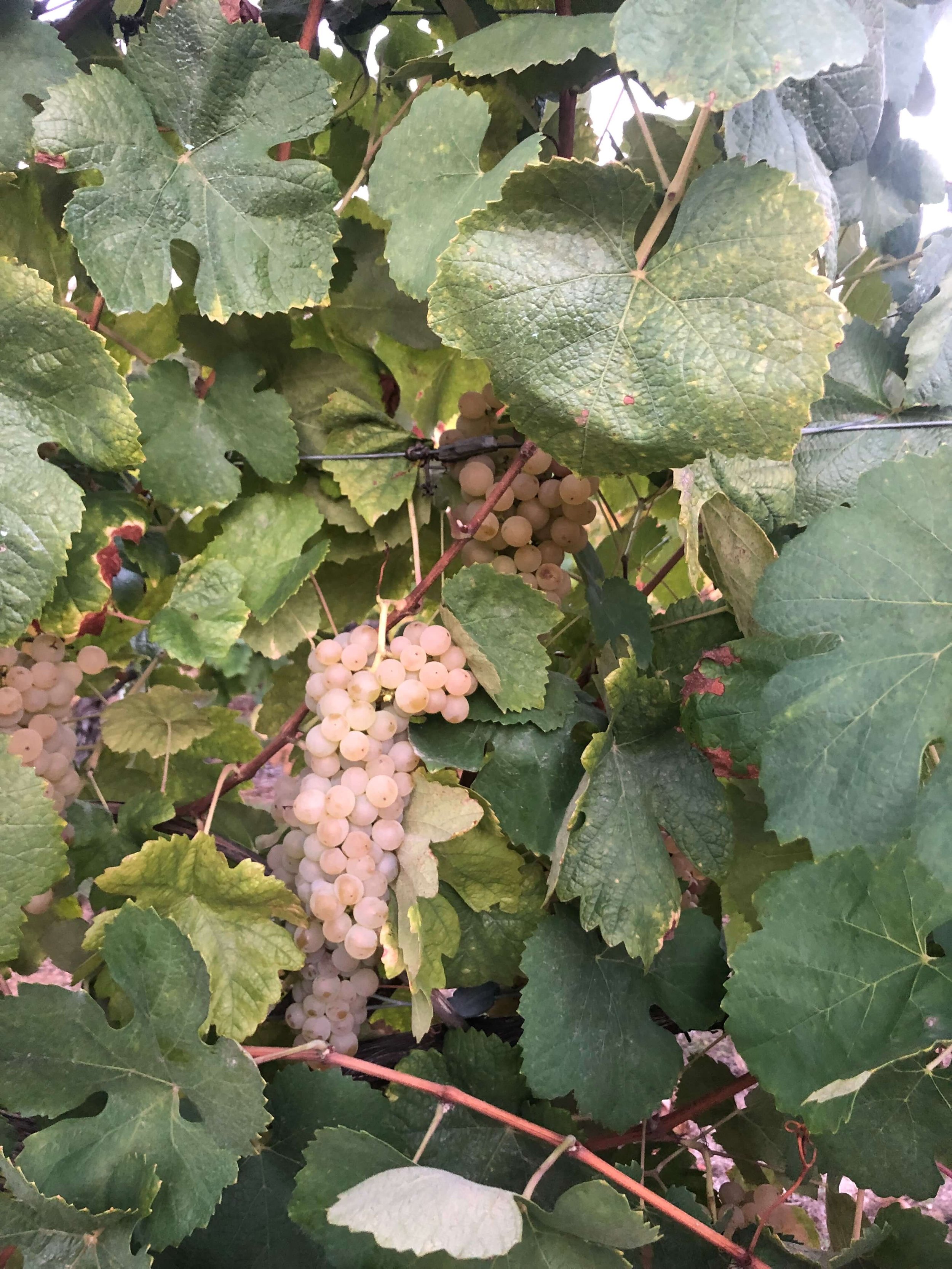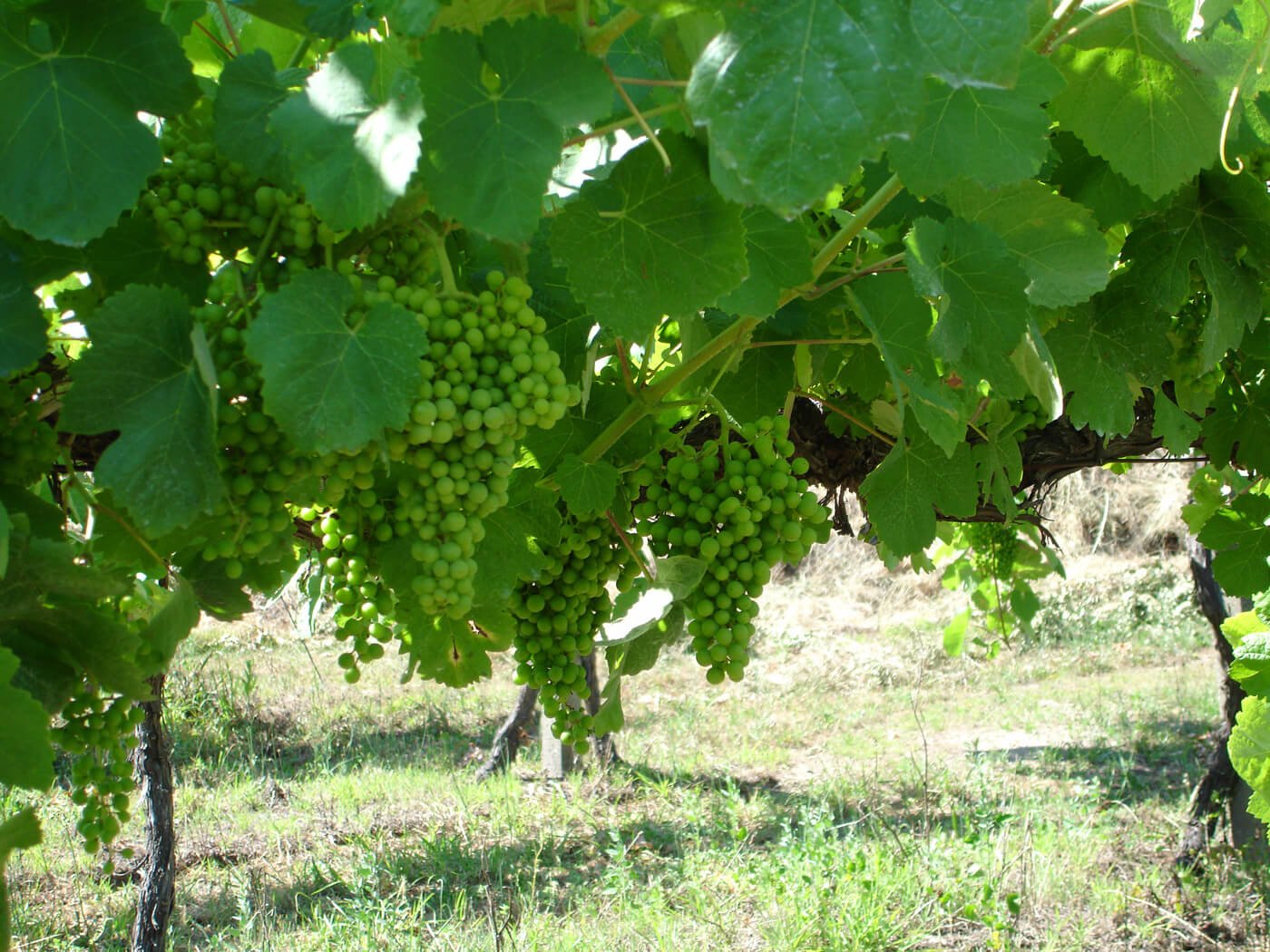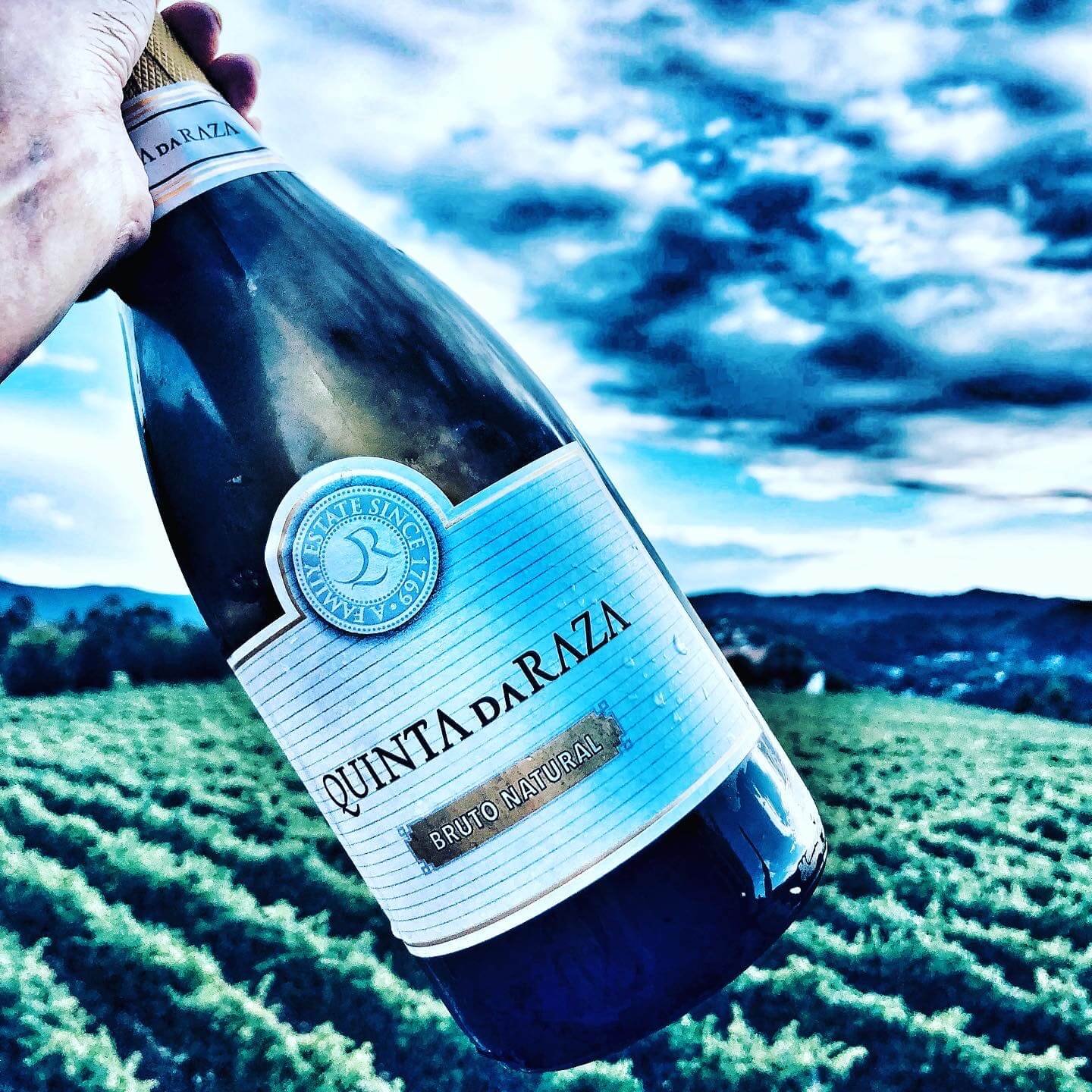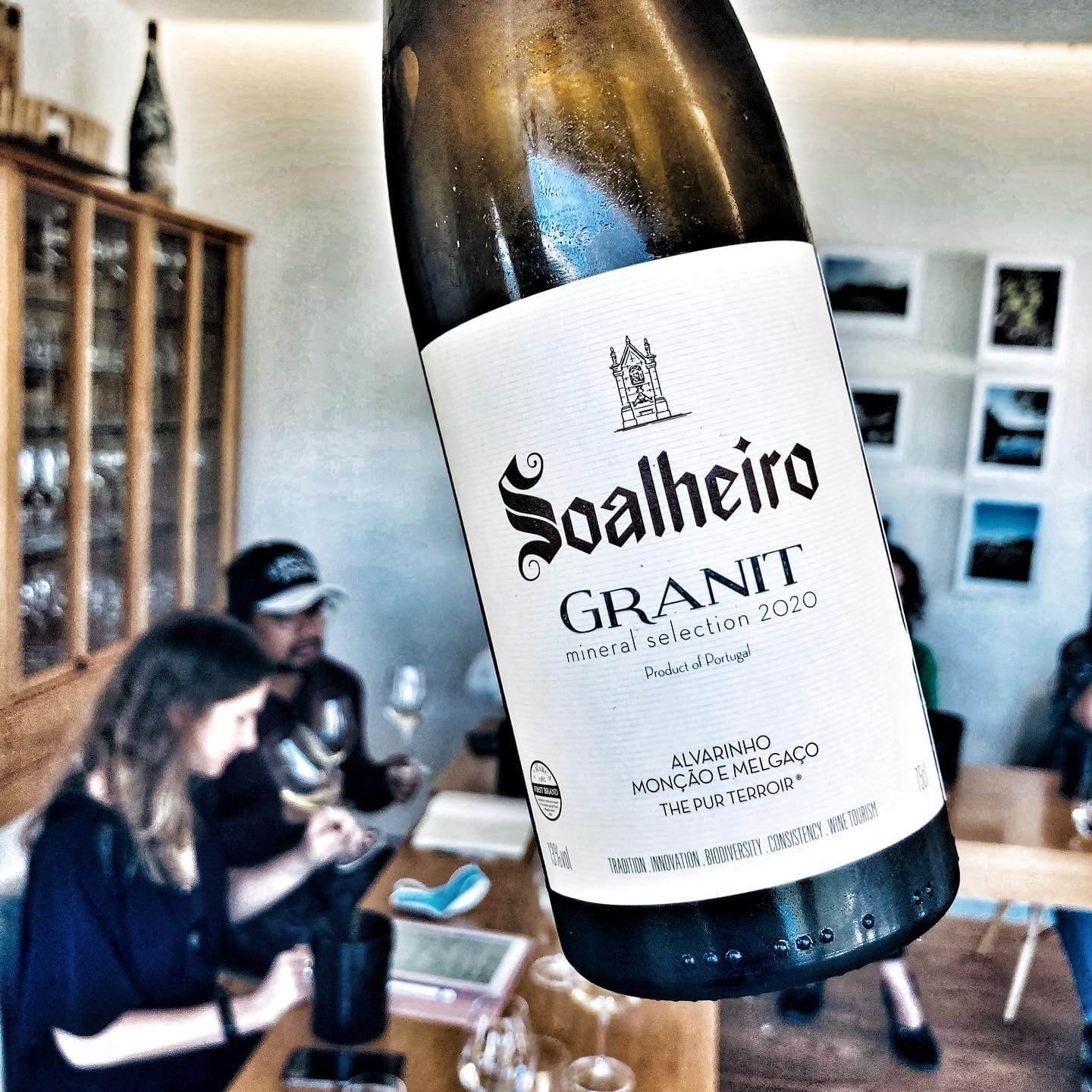A Wine Lover’s Guide to Cheap, Cheerful And Surprisingly Premium Vinho Verde
Vineyards in Portugal
Vinho Verde is a region whose name says it all. Literally, Vinho Verde translates to green wine. On a recent visit, I discovered that in ways both literal and metaphorical, the notion that this place is “green” is true.
As I approached Porto, Portugal, looking down, I saw a postage stamp of grey cityscape set within a vibrant, mountainous landscape with a tapestry of green I didn’t know existed in nature, all at once: forest, chartreuse, Kelly, lime, hunter, mint, olive, spring, pastel, jade, emerald, moss, apple, viridian green.
The Vinho Verde region: perfect for bright whites
Vinho Verde is Portugal’s largest wine-growing region, spread across a swath of land in Northwest Portugal that stretches from the roaring Atlantic Coast in the west, to the Freita, Arada and Montemoru mountains to the east, down to the Douro river in the south and up to the Minho River in the north. The wine most commonly found there is white, young, fresh and fruity and can have a subtle greenish cast. (Though that is changing, with more serious and gastronomic wines rising to the fore).
Grapes for vinho verde. Photo courtesy of CRVV.
Within that broad and diverse landscape, about 16,000 winegrowers cultivating 40,000 acres are under vine in nine different subregions, with 45 officially approved DOC varietals and several others thriving, according to the Vinho Verde Viticulture Commission (CVRVV). (Winemakers are free to grow whatever they want, but if they want the official Vinho Verde DOC label on their bottle, it has to contain only officially approved indigenous grapes like Alvarinho, Loureiro and Trajadura).
The region itself, as I said, is also literally quite green, thanks to its mild climate consistent rainfall and steady humidity. The soil is perfect for bright whites: primarily granitic, with two narrow strips of schist.
Vinho Verde landscape. Photo courtesy of CRVV.
Vinho Verde is also metaphorically green in that it is—by European standards at least—a fairly young, and extraordinarily dynamic region that is evolving rapidly. In 1908, the region was officially demarcated, and the CVRVV was created in 1926 to regulate and control and ensure the quality of the production of wine in the region.
The U.S. is Vinho Verde’s largest export market, and the vast majority of what can be found on the shelves here is cheap (often $12 or less), low-alcohol (9%-10% ABV), fizzy (forced CO2), white blended (primarily Alvahrino, Arino, Avesso, Azal, Loureiro and Trajadura) grapey fun. But on a recent journey to the region, I discovered that not only is there a lot more to Vinho Verde, the producers there are eager to share their increasingly sophisticated, complex wines with the world.
While international travel may not be possible for everyone right now, I will say that I felt safer in Portugal than I have felt exploring U.S. regions recently. The COVID-19 vaccination rate there is among the highest in the world (latest numbers here), and airlines and hotels require recent negative COVID tests to board and stay. Mask-wearing is universal, and in Portugal, everyone seems to have has mastered the art of wearing the mask over their mouth and nose… at the same time.
Please read on for more about how to enjoy a unique, delicious and extraordinarily affordable adventure in Vinho Verde.
Visiting the Vinho Verde region: Where To Stay
First, you have to have a home base from which to venture out. While there are a plethora of well-appointed, surprisingly luxurious (given the price, which is almost always less than $175 a night) hotels across the region, the best place to stay for the full Vinho Verde experience is the Monverde Wine Experience Hotel.
Monverde is a series of charming and unpretentious, but impressive dark wood, stone, and glass structures that seem to rise organically out of the Quinta da Lixa vineyard, a continuation and evolution of the landscape. The rebuilding of the original “main building” was initiated in 2006, but the scope of the project broadened. By 2016, four accommodations with 46 spacious, modern, sun-filled rooms had emerged.
Each room is different, but all were designed to have vineyard views, and they all have spacious rooms, bathrooms, and thoughtfully stocked minibars. Many have decks, and ten of the rooms have their own pools.
Old wine press photo courtesy of CRVV
“The purpose of building out the Monverde Wine Experience was to offer international visitors a taste of what we at Quinta da Lixa are capable of, but also what the entire region is doing,” winemaker Carlos Teixera explains. “We want to broaden what people think of when they think of Vinho Verde, of the kind of wines we make, and the kinds of experiences they can have here.”
As we walked the grounds at sunset, meandering through the vines, set against the gleaming wood and glinting windows of the buildings, listened to the vineyard ducks settling in for the night, it was hard to not fall under Monverde’s, and Vinho Verde’s spell. Smelling the rich, almost ripe grapes right before harvest, slowly walking toward what turned into a raucous, five-course meal, it was impossible.
The main building houses whimsical contemporary art, a spa, a pool and a decadent restaurant with Chef Carlos Silva serving up a tantalizing taste of the country’s gastronomic history. Make sure you try the cornbread-crusted sardines with pepper couli and crispy basil; the braised seabass on a bed of sweet potato puree and green asparagus; an impossibly complex confection comprised of pumpkin sponge cake, cardamom and orange ice cream, sweet seeds. (For other unmissable stops on your gastronomic journey, see below).
Monverde’s location is key too: it’s in Teloes, the heart of the region, it is 45 minutes west of Porto, 45 minutes north of the Douro and 15 minutes away from the historical city of Amarante.
Rooms rates start at $130 a night, and the hotel will also help you arrange for rental or chauffeured cars to take you around the region. But if you’re keen on spending more time just soaking up Monverde’s heady atmosphere, the hotel also offers a number of curated experiences, including the opportunity to make wine and work in the cellar for a day.
Wineries To Visit
All of the wineries I visited across the Vinho Verde region bore similar hallmarks: the welcome was generous, warm and enthusiastic. The focus is on the vineyard and the wines, instead of the tasting room. Every winery I visited and mention below was pin-clean and filled with sanitation stations, COVID-aware and staffed with people eager to answer questions and walk visitors through the cellar, vines and history. My favorites, below:
Quinta da Lixa
If you don’t opt to stay at Monverde, you must at least visit. The winery is owned and operated by the Meireles family, and was established in the mid-1980s as a basic “cellar-door” vendor of easy-drinking wine. It has evolved considerably in the decades since, with the construction of a world-class winery, and then hotel.
Now, in addition to finding classic iterations of Vinho Verde, like the Escudo Real (a blend of Loureiro, Arinto and Trajadura) that is honeyed but crisp, rippling with acidity, a bright delight, Quinta da Lixa is pushing the region into untrod viticultural territory.
During dinner at Monverde, I’ll confess that Pét Nat was the furthest thing from my mind. And yet, I couldn’t have picked a better pairing for the sea bass than the Morgada Da Vila Pét Nat from. The first certified Pét-Nat from the Vinho Verde region, the base wine is comprised of Alvarinho and Loureiro, and was made without the addition of yeast or sulfites. This sip has the haziness of other Pét-Nats (when the end of alcoholic fermentation takes places in the bottle), but had a deeper complexity than many I’ve tasted. Peaches, apricots, warm-baked bread. I asked Teixeira what sparked the inspiration in the first place.
“I tried 20 Pét-Nats in Canada, and was struck by how well the ones I liked paired with food,” says Teixeira. “I came home inspired to do the same here, and three years later, more and more producers are exploring the possibilities of Pét-Nat made with our indigenous grapes.”
That spirit of openness, the embrace of the new, will be found at all of the other wineries you visit too.
Quinta da Raza
This winery is nestled within the green mountains of Lugar de Peneireiros, Celorico de Basto in the Basto subregion, with the River Tamega flowing through. This is one of the few wineries in the region with that clay-schist soil in addition to the granite.
Visitors are welcomed to enjoy tastings on a terrace with panoramic views of the vineyards, or they can picnic among the vines. Here, the best wine to taste is single-varietal expressions of Avesso, an intense and full-bodied white with notes or orange, melon, pineapple, flowers and peaches that flourishes especially well in the Baiao subregion, but also does well in Amarante, Basto, Paiva and Sousa. The one at Quinta is vibrant, persistent and powerful, this would be happy in the cellar for up to 10 years.
Quinta das Arcas
Quinta das Arcas’ tagline is that their “wines are a discovery of new emotions,” and the welcome visitors receive will be just as auspicious and hopeful.
The family winery in tucked within a small, pictaresque rural town municipality named Sobrado, and was established in 1985. The best way to understand what’s happening in the vineyard and cellar is to schedule a guided tour in the vineyards, with a selection of their Vinho Verde wines (plus two from their estate in Alentejo), paired with classic Pauperio cookies (salty, rich, buttery), local cheeses, and olive oil.
Like Quinta da Raza, this winery excels at single-varietal expressions of wine, a recent development in the region. While 70%-75% of Vinho Verde’s output can be filed under “cheap and cheerful.” But according to the CVRVV, producers are hoping to if not flip that ratio, at least significantly boost the percentage of serious, single varietal expressions emerging from Northwestern Portugal.
My favorite sip from Quinta das Arcas was their Trajadura, a delicate dance through the orchards, it can be grown anywhere, save Baiao. It’s a high-aroma and flavor grape, peaches, pears and apples, smooth and round, a great transition wine between late summer and early fall. I tasted current and aged vintages, and was thrilled to see how it aged and evolved with deeper honey, tropicality and spice for five-10 years.
I also loved their classic Arca Nova (a blend of Loureiro, Arinto and Trajadura), coming in at 10.5% ABV, a fruity, fresh and joyful quaff of summer. Green apples, lemons, with white flowers, a soft minerality and more structure and power than I’d expect.
Quinta d’Amares
Quinta d’Amares is ensconsed in Amares, in the small, sunnny village of Sto. André de Rendufe, a land steeped in rural religious traditions. The winery’s history dates back to the 11th century, when it was the site of the famous Benedictine Monastery, Mosteiro de Santo André de Rendufe. The stunning 18th century rococo buildings and experiential tour evoke a different time and place, and it feels fitting to end it with not glasses of blended white, but the latest craze sweeping the region: rosé.
While it’s true that producers in Vinho Verde did not make rosé until everyone else in the world decided to, its mellow climate and granitic soils create a delicious recipe for the pink drink. Many are off-dry, but there are plenty of very dry iterations, and some of the best are made with Espadeiro and Padeiro grapes, both rare finds in the region until global interest in rosé began building a decade ago. The Quinta D’Amares rose delivers fresh, but seductive raspberry and strawberry notes, with a hint of minerality.
“It’s a pleasure to be able to help bring an under-planted grape back,” says João Pires, commercial and marketing manager for Quinta D’Amares.
Soahlheiro
If you only go to one winery in Vinho Verde, this should be it, because Soahlheiro, in the Monçao e Melgaço, along the Minho River within spitting distance of the Condado do Tea subregion of Rias Baixas in Spain, represents the vanguard of quality and progress in the region.
Visitors will taste wine, tour the vineyards and embark on a philosophical and gastronomic journey through Minho cuisine. (Make sure to try their herbal teas too). Visitors will also come to understand by Soahlheiro has become a local legend and an international benchmark for the region, and for the Alvharinho grape.
In 1974, Joao António Cerdeira and his parents, António Esteves Ferreira and Maria Cerdeira broke with tradition and instead of planting Alvarinho around the star crop (grains), they went all in and planted fields of Alvarinho. These wines will age for five-15 years.
“It is the most elastic grape,” Cerdeira said as he walked me through his cellar. “For me now, I am focusing on exploring just how far we can take it. We have it fermenting and aging in every winemaking vessel available, from ancient to modern times. Amphora, cement eggs and tanks, steel eggs and tanks, barrels. Some on skins, some quickly pressed.”
Some get a short fermentation and aging treatment, others age (on and off the skins) for months. They produce still, and sparkling wine. Sustainably and, when possible, biodynamically farmed.
There are the crowd friendly fruit-forward expressions, including one low 9% ABV, mineral-driven (my favorite, the Granit) mountain wines that will age for a decade, party-ready classically made sparklers, all from Alvahrino. Soalheiro also grows other grapes, including Loureiro and even Pinot Noir, but Alvahrino is the searing star that has made the brand an international cult wine.
Where To Eat
Come to Portugal thirsty, but also with an appetite.
Every meal, save breakfast, will likely kick off with a heaving plate of Pastéis de Bacalhau (salt cod fritters), an addictive pop of umami-packed comfort that tastes like Portuguese hospitality feels: sophisticated but humble, welcoming as a mother’s hug, delicious and warm.
Bacalhau—and Portugal’s obsession with salt cod more generally—is a remnant of the country’s empirical past. The dish became popular, and then foundational, in Portugal during the Age of Exploration (1400-1600s), when Portuguese sailors introduced this easy-to-preserve, nourishing source of protein sourced from the cold waters surrounding Scandinavia.
Following that cod amuse bouche, will be an intense, memorable, rich and delicious flight of farm-fresh cheeses, regional brown breads, charcuterie, sausages, an array of seafood (make sure you order the sardines, octopus and all of the locally caught crustaceans) and, traditional delicacies like arroz de tomate (tomato rice), petingas fritas (battered and fried small sardines), caldo verde soup (kale, potato and sausage soup), and tripas a moda do porto (stew of sausage, cured pig’s ear, tripe and beans), plenty of bife (steak) and veal, and custard-filled pastries that walk the line between savory and sweet.
Where, readers may wonder, should I go to seek this delicious fare out? The short answer is everywhere. From delis to bars to Michelin-starred emporiums, the food across the Vinho Verde region is locally sourced (except for that cod), traditionally minded and consistently decadent.
That said, these restaurants were my hands-down favorites:
DOP
DOP is housed in a historic building in the city center of Porto, DOP offers traditional Portuguese fare made by one of the country’s top chefs, Rui Paula, in a contemporary, luxurious setting. Incredible wine list.
O Paparico
O Paparico is a traditional restaurant in Porto with subdued lighting and stone walls, where chef Rui Martins takes diners on a journey through Portuguese cuisine, serving seafood and pork sourced from the coast and farms of Portugal, and regional rice dishes. One of the best wine lists in town, with several rarities on offer.
Oficina
This Porto gem is set in a stylish, industrial setting on an art gallery-strewn street. Helmed by chef Marco Gomes, it offers a beautifully plated, contemporary take on traditional Portuguese cuisine, with an emphasis on fresh seafood. Don’t miss the delicious bread basket.
Casa da Calcada
Set within a sumptuous boutique hotel in Amarante, surrounded by 100-year-old gardens, this restaurant is helmed by Tiago Bonito, who elevates locally sourced farm-and-sea-to-table cooking into an artform.
You’ll leave all of these places sated, but hungry to learn more. A taste of Portugal is glorious, but after a week of deep exploration there, my appetite for this lush, green land was merely whet. Call a week an exploratory amuse bouche.
It’s rare to find a world-class destination in Europe with exciting wine, history, food and culture a visit to which doesn’t imperil your offspring’s college fund. Vinho Verde is one of last and best.
And for wine lovers who are more content to taste Vinho Verde’s bounty from afar, more and more premium bottles are headed this way. There will always be a place in my cellar for Vinho Verde’s porch pounders, but I’m eager to make room for the premium Vinho Verde too. Like Vinho Verde’s hospitality, these premium bottles come at a bargain price; you would be hard-pressed to find even the most rarefied bottle for more than $30-$48. And that’s what they call QPR.






